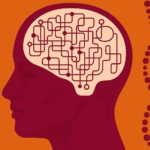NVIDIA GR00T: The ChatGPT Moment for Robotics Has Arrived
Imagine a robot that can unload your dishwasher, sort your recycling, and even solve a Rubik’s Cube—all while learning from its environment like a human. This isn’t science fiction. At GTC 2025, NVIDIA CEO Jensen Huang unveiled GR00T N1, the world’s first open foundation model for generalist humanoid robots, marking a paradigm shift in robotics. But what makes GR00T revolutionary, and how does it address the Achilles’ heel of robotics: adaptability? Let’s dive in.
The Dawn of Generalist Robots: Why GR00T Matters
Traditional robots excel at repetitive tasks in controlled environments—think assembly lines or warehouse pickers. But real-world unpredictability—cluttered homes, uneven terrain, or dynamic workspaces—has long stumped AI. Enter NVIDIA Isaac GR00T N1, a multimodal foundation model trained on 750K synthetic trajectories and real-world data to enable robots to reason, adapt, and perform tasks requiring human-like dexterity .
Key Challenges GR00T Solves
- Task-Specific Models: Historically, each robot task required a custom AI model, costing time and resources.
- Data Scarcity: Real-world robotic data is expensive and limited.
- Sim-to-Real Gap: Simulation-trained models often fail in physical environments.
GR00T tackles these by combining internet-scale human videos, synthetic data from NVIDIA Omniverse, and real robot teleoperation data into a unified training pyramid. The result? A 40% performance boost over models using real data alone .

Inside GR00T’s Brain: A Dual-System Architecture Inspired by Humans
GR00T’s architecture mimics human cognition, blending methodical planning with instinctive action:
System 2: The “Thinker”
- Vision-Language Model (VLM): Built on NVIDIA-Eagle with SmolLM-1.7B, it interprets environments using vision and language (e.g., “Pick up the blue block”).
- Role: Plans tasks, reasons about object relationships, and generates step-by-step instructions .
System 1: The “Doer”
- Diffusion Transformer: Translates System 2’s plan into precise, continuous movements.
- Role: Executes actions like grasping, lifting, or coordinating dual-arm movements .
This synergy allows GR00T-powered robots, like the Fourier GR-1 and 1X Neo, to handle complex tasks—from assembling industrial parts to folding laundry—with fluidity previously unseen in robotics.
Real-World Applications: From Factories to Disney’s Labs
At GTC 2025, NVIDIA showcased Blue, a collaborative robot developed with Google DeepMind and Disney Research. Powered by GR00T and NVIDIA’s Newton physics engine, Blue demonstrated human-like agility, navigating cluttered spaces and manipulating delicate objects—a glimpse into future assistive robots for healthcare and hospitality .
Industrial Use Cases
- Material Handling: Seamlessly transfer items between conveyor belts.
- Quality Inspection: Identify defects using vision-language reasoning.
- Packaging: Adapt to varying box sizes and shapes.
| Task | Baseline Success Rate | GR00T Success Rate |
|---|---|---|
| Pick-and-Place | 36% | 82% |
| Articulated Manipulation | 38.6% | 70.9% |
| Dual-Arm Coordination | 62.5% | 82.5% |
Table 1: GR00T outperforms baseline models in real-world benchmarks .
Training GR00T: Synthetic Data, Real Results
Training generalist robots requires massive, diverse datasets. GR00T’s data strategy leverages:
- Web-Scale Human Videos: Learn natural motion patterns (e.g., how humans open jars).
- Omniverse Synthetic Data: Generate infinite variations of tasks in simulation.
- Real Robot Teleoperation: Fine-tune with domain-specific data.
Using NVIDIA’s Isaac Lab, developers generated 750K synthetic trajectories in 11 hours—equivalent to 9 months of human demonstrations . This hybrid approach slashes development time while improving real-world reliability.
Getting Started with GR00T: A Developer’s Playbook
NVIDIA has open-sourced critical tools to democratize GR00T:
- GR00T-N1-2B Model: Available on Hugging Face.
- Fine-Tuning Scripts: Optimize the model for custom tasks using PyTorch.
- Simulation Frameworks: Test in NVIDIA Isaac Sim before deploying to physical robots.
Minimum Requirements:
- 1x NVIDIA RTX 4090 GPU (fine-tuning)
- NVIDIA Jetson AGX Orin (deployment)
The Road Ahead: Vera Rubin and the Future of Robotics
GR00T is just the beginning. NVIDIA’s roadmap includes:
- Vera Rubin Architecture (2026): Doubling bandwidth for even faster AI training .
- GR00T N2: Scaling to 10B parameters for advanced reasoning.
- Open-Source Newton Engine: Simulate hyper-realistic robotic movements .
As Jensen Huang noted, “The ChatGPT moment for robotics is here”—and GR00T is leading the charge.
Final Thoughts: Why GR00T Changes Everything
GR00T isn’t just another AI model. It’s a foundational leap toward robots that learn, adapt, and collaborate like humans. For developers, it democratizes access to cutting-edge robotics. For industries, it unlocks automation in unpredictable environments. And for society, it heralds a future where robots handle mundane tasks, freeing us to focus on creativity and innovation.
Call to Action:
- Developers: Experiment with GR00T on Hugging Face.
- Business Leaders: Watch the GTC 2025 keynote to explore partnerships.
- Enthusiasts: Join NVIDIA’s Robotics Discord for updates.
What’s your take on humanoid robots? Could GR00T transform your industry? Share your thoughts below!


